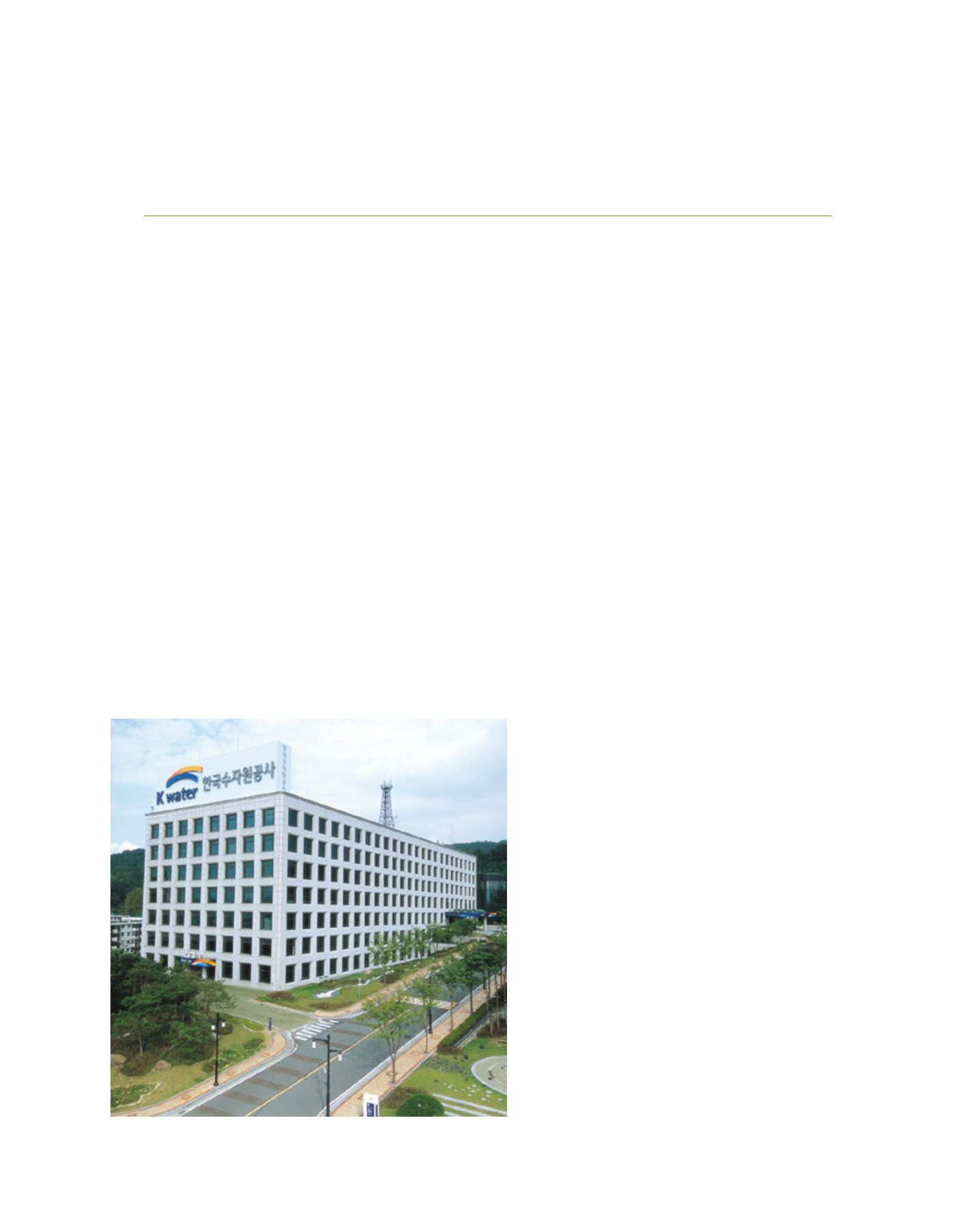

[
] 267
Water resources management as an engine for
economic growth in the Republic of Korea
Kyung-Jin Min, Director and Sunkyo Hong, Researcher, Research Center for Water Policy and Economy, K-water
T
he Republic of Korea today enjoys a high standard of living
and produces cutting-edge technology, as well as creating
and exporting high quality consumer electronics. In terms
of numbers, Korea is the world’s thirteenth-largest economy and
its twenty-fifth most populous country.
1
However, just 50 years
ago, Korea was one of the poorest countries in the world, with a
gross domestic product (GDP) per capita of less than US$100 at
the beginning of the 1960s.
2
This economic transformation from
indigence to modern economic powerhouse has come to be known
as ‘the Miracle on the Han River’, which is the river that flows
through Seoul, Korea’s capital. This is an appropriate name, as
it suggests that the river played a part in the transformation.
Indeed, Korea’s rapid growth and development would not have
been possible without the water resources and their development.
There follows an account of how the management and develop-
ment of water resources has served as an engine for growth in Korea
through the various phases of its development history. An explora-
tion of the institutional framework for water resources development
will be followed by examples of cooperation among interest groups.
These various aspects of Korea’s water development are
explored with reference to the role of the Korea Water
Resources Corporation, or K-water.
Korea’s economic development history can be viewed
in terms of decadal phases: post-war reconstruction in
the 1950s following the Korean War, the building of light
industries in the 1960s, large investments in the heavy and
chemical industries and the modernization of agriculture
in the 1970s, economic liberalization in the 1980s, and
globalization and aid regulation in the 1990s.
3
The first
phase, the 1950s, was the period following the Korean
War. The Korean economy during this time depended
heavily on foreign aid, most of it from the United States,
and economic policy was one of import substitution.
The flour, sugar and cotton-spinning industries received
special attention,
4
but given the aid-dependent nature of
the economy, the import substitution policy was at best a
modest success, recording annual growth of 3.9 per cent.
5
The next two decades saw the launch of great economic
progress under a new government and new economic
policy. Policy during this period and until the mid-1980s
was guided by five-year economic and social develop-
ment plans drafted by the Economic Planning Board
(EPB) established in 1961. Under the EPB’s guidance,
GDP in the 1960s grew 8.5 per cent annually, manufac-
turing (mainly from light industries) grew 17 per cent
annually, and gross national product per capita tripled
from US$82 in 1961 to US$253 in 1970. Unemployment
also fell from 8.1 per cent in 1963 to 4.4 per cent in
1970. A strongly export-oriented strategy and favoura-
ble foreign trade environment drove this growth, which
despite rising inflation reduced absolute poverty and
secured the foundations for a self-sustaining economy.
6
The nurturing of six heavy and chemical industries
(HCI) – steel, shipbuilding, machinery, electronics,
petrochemistry and nonferrous metals – and the ambi-
tious goals to raise the per capita income to US$1,000
and achieve US$10 billion in exports defined the 1970s.
7
During this period, Korea saw the modernization of its
agriculture and the launch of the Saemaeul Undong, or
New Village Movement, a nationwide effort to develop
and improve standard of living. The economy continued
to enjoy rapid growth, averaging 9.1 per cent between
1971 and 1980. HCI’s share of manufacturing’s contribu-
tion to GDP increased from 37.8 per cent to 57.5 per cent
between the beginning and end of the decade.
8
E
conomic
D
evelopment
and
W
ater
The headquarters of the Korea Water Resources Corporation (K-water)
Image: K-water


















